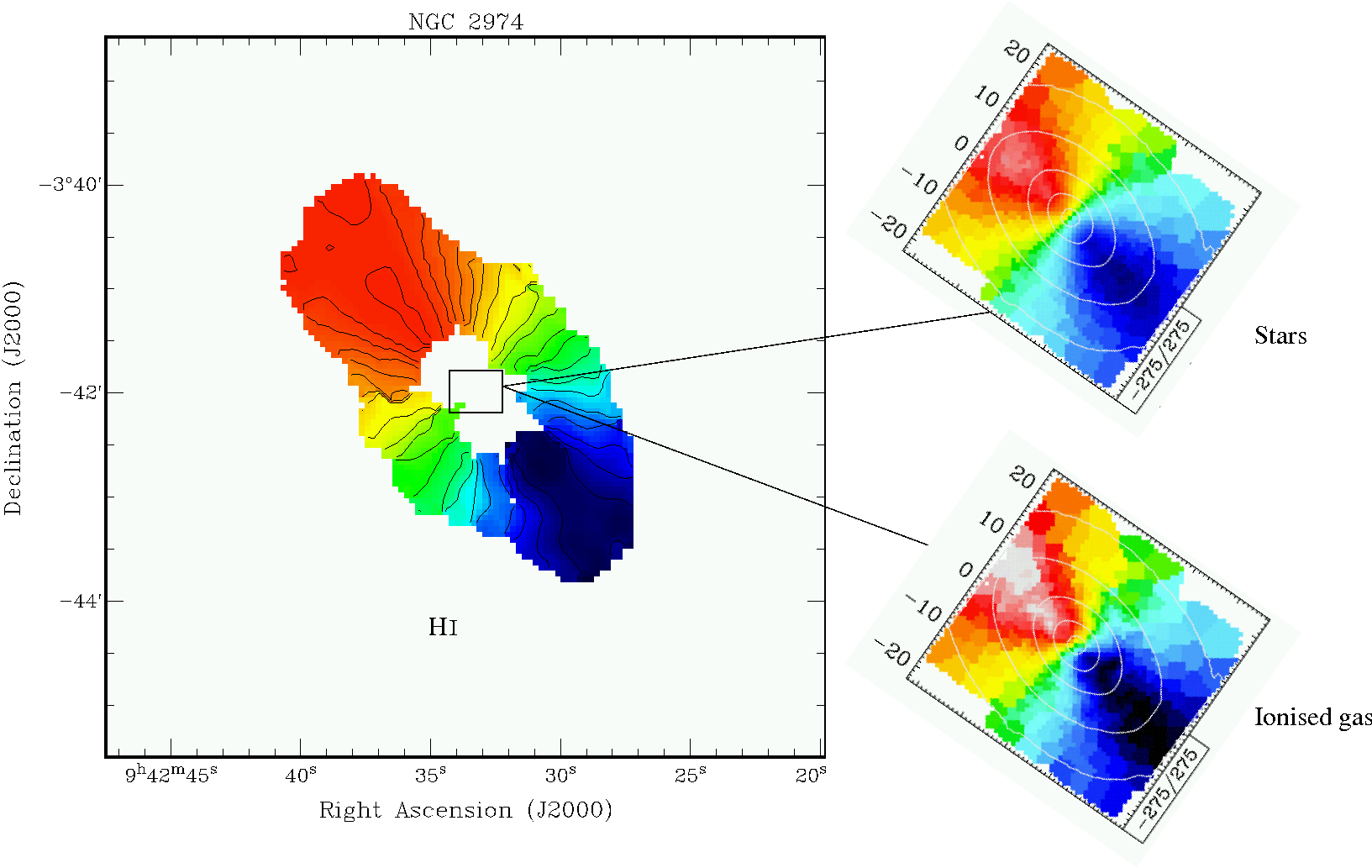Daily Image
13-09-2007The dark side of SAURON
| Submitter: | Raffaella Morganti |
| Description: | Most of the matter in the Universe is dark. We can't see it directly (that's why its called dark...) but we know it is there because we detect its gravitational field. It cannot be ordinary matter - protons, neutrons, electrons, the stuff that stars (and you) are made of -, it probably consists of some other strange sub-atomic particle (but we don't have a real clue). Dark matter has a crucial role. In the early Universe, galaxies form due to the gravitational collapse of fluctuations in the dark matter density field. Therefore, every galaxy should have dark matter. It came therefore as a surprise that a few years ago, based on observations with the Planetary Nebulae Spectrograph (called PNs, partly built at ASTRON), it was claimed that some galaxies (so-called elliptical galaxies) do not have dark matter. The interpretation of the data obtained with the PNs is not straightforward and the result is not unambiguous, so it necessary to estimate the dark matter content of elliptical galaxies in an independent way. This can be done by combining radio observations of the kinematics of the neutral gas (HI) in elliptical galaxies with optical observations of the kinematics of the stars and the ionised gas in these galaxies. The figure shows how the neutral hydrogen (left, data obtained with the VLA), the stars and the ionised gas (right, data from the optical integral-field spectrograph SAURON) are rotating in the elliptical galaxy NGC 2974. Blue means moving towards us, red means away from us. All three plots are on the same spatial scale, showing the much larger radii sampled by the neutral hydrogen. Because the motions of the stars and the gas are the result of the gravitational field due to all matter (visible plus dark), these kinematical data can be used to reconstruct the mass distribution in the galaxy. and the unique combination of large-scale HI and integral field spectrograph optical data has allowed to construct an accurate mass model of NGC 2974. This model clearly points at the presence of significant amounts of dark matter in this galaxy: 75% of all matter in NGC 2974 is dark. These results are presented in a paper (Weijmans, Krajnovic, van de Ven, Oosterloo, Morganti, de Zeeuw, MNRAS submitted) and is also part of the PhD project of Anne-marie Weijmans of the Sterrewacht Leiden. |
| Copyright: | Astron 2007 |
| Tweet |  |
